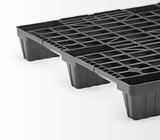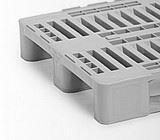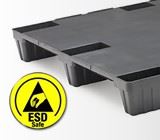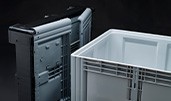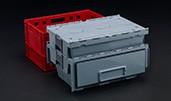Do you want to know what they are? Do not miss the advice we offer you from Naeco, previously Nortpalet!
4 basic steps to NOT break the cold chain
The procedures to be followed and the disciplined compliance with them is essential to minimize the possibilities of human error when transporting and storing products. Therefore, how do we manage and preserve the products correctly within the cold chain? To get started, follow these simple steps:
1. Provide employees with the necessary information and training. Absences due to employee error are some of the most difficult to prevent. For that reason, this first step is vital for them to be aware of the special precautions required when handling cold chain items in certain situations and the health and economic consequences of breaking it.
2. Create additional capacity. The entire supply chain must have sufficient capacity to handle and handle temperature sensitive items. As transportation errors can stop and block operations in some locations, additional capacity is needed in other warehouses and distribution centers to compensate. In this way, products are prevented from being lost or damaged in unforeseen circumstances.
3. Use technology to optimize. Automation, thanks to ASRS or AGVs systems, is one of the best practices in the cold chain because the products are less exposed to human manipulation, thus reducing possible errors. Another advantage of automation system is that they allow products to be stored higher, thus favoring the saving of warehouse space and the contribution of additional capacity to the cold chain.
4. Use plastic pallets. To improve the smooth operation and effectiveness of automation in the supply chain, the use of plastic pallets is essential, since, lacking nails and boards, as in the case of wooden ones, it becomes a much more reliable platform , stable and safe to be used in warehouses with automated ASRS systems or Automatically Guided Vehicles (AGVs).
Some examples and practical tips
Would you know what to do to preserve temperature controls when goods travel without refrigeration from the loading dock to the warehouse or how to increase their capacity? Take note of these basic recommendations.
How to travel without breaking the cold chain:
• Keep vehicle coolers closed until there is enough space to receive cargo.
• Check for temperature lapses before storing the items.
• Check that there is enough space available in the refrigerator for loading.
• Rearrange products in the refrigerator to make room without damaging them.
• Carry out the transfer between the cold rooms as quickly as possible.
• Close the door after leaving.
How to expand capacity:
• Assess the existing supply chain to determine potential gaps.
• Identify locations with overflow capacity to handle excess products.
• Prepare plans for a new cold store.
• Develop a construction program and mobilize resources.
• Establish criteria for when this capacity will be used.
• Use plastic pallets to save space.
Benefits of the plastic pallet in the management of the cold chain for the pharmaceutical industry
The plastic pallet is a very suitable packaging for the storage and transport of products that need refrigeration such as some of the pharmaceutical products, so delicate and sensitive to changes in temperature. We have several alternatives depending on the logistical use that is given to them. But the plastic pallet offers multiple advantages, especially when they circulate through automated systems. We highlight some of them!
• It is easier to track through automated warehouse systems. When a plastic pallet is equipped with tracking measures, it can be accurately and reliably tracked by scanner, barcode, or radio frequency. Such monitoring would allow you to predict what additional space you would need in hypothetical scenarios that could affect your supply chain.
• Stable and safe handling and transfer of merchandise. Plastic pallets are nail-free, nor splinter-free, making them the cleanest, most robust, and most reliable option for use with automated systems. In addition, plastic is a stable material in cold and freezing environments, where humidity tends to predominate. In these spaces, the plastic pallets remain stable in shape and size, being safer in the transport of goods and having fewer rejections in the automatic systems.
• They are better disinfected and do not absorb moisture. Medicines are very sensitive products and vulnerable to contamination. So, the fact that the plastic pallets do not allow them to absorb humidity, which is common in cold environments, and are easy to disinfect, ensures the maximum hygiene and cleaning conditions. There are models designed for example for clean rooms, where the Clean range is the most recommended.
Conclusion
Plastic pallets are, therefore, perfect logistics complements that help to comply with the protocol of good practices, required to correctly protect and maintain the cold chain of sensitive products such as those that move in the pharmaceutical industry. If you need to know how to improve the security of your supply chain or what type of pallet is the most suitable for your product, contact us without obligation!

